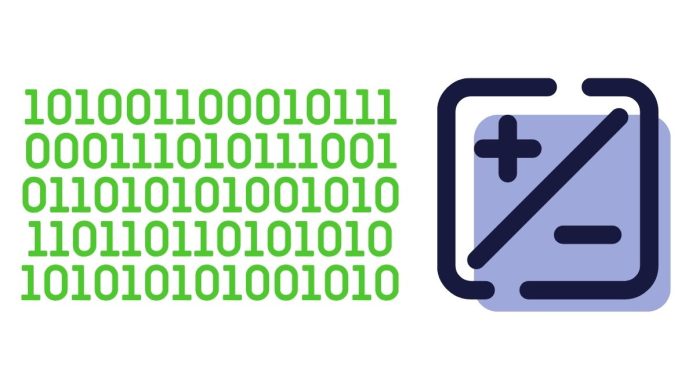In the world of digital electronics and computer systems, binary arithmetic is crucial. One of the key techniques for performing arithmetic operations like addition and subtraction on binary numbers is 1’s complement. The 1’s complement system is a method of representing signed binary numbers, where the negative numbers are encoded by inverting the bits of their positive counterpart.
In this blog post, we’ll explore the concept of 1’s complement, how to perform addition and subtraction using 1’s complement representation, and its advantages and challenges.
What is 1’s Complement?
In a binary system, 1’s complement is a method for representing negative numbers. To find the 1’s complement of a binary number, you invert each bit of the number:
- Change 1s to 0s, and
- Change 0s to 1s.
For example:
- The 1’s complement of 1101 is 0010.
- The 1’s complement of 0101 is 1010.
The 1’s complement of a number allows it to represent both positive and negative numbers, but it does have a significant drawback—two representations of zero. Both 0000 (positive zero) and 1111 (negative zero) represent zero in 1’s complement. This can lead to some complications in arithmetic operations.
Addition Using 1’s Complement
The process of adding binary numbers in 1’s complement is similar to standard binary addition, with an extra step for handling carries. When performing addition on 1’s complement numbers, the procedure goes as follows:
Step-by-Step Process for Addition:
- Add the numbers: Start by adding the two binary numbers just as you would in normal binary addition, ignoring any carries for now.
- Handle the carry bit: After performing the addition, check if there is a carry bit. If there is a carry bit, add it back to the result.
- Convert the result: If the result is a negative number (the most significant bit is 1), it will be represented in 1’s complement form. You may need to convert the sum back to 1’s complement if necessary.
Let’s break this down with an example:
Example 1: Adding 1’s complement numbers
Let’s add 5 and -3 using 1’s complement.
Step 1: Convert numbers to 1’s complement
- 5 in binary: 0101
- -3 in 1’s complement (invert the bits of 3): 1100
Step 2: Add the numbers
0101 (5 in binary)
+ 1100 (-3 in 1's complement)
--------
10001 (This is the sum, which includes a carry bit)
Step 3: Handle the carry
Since there is a carry bit (the fifth bit), add it back to the result:
0001 (Carry bit)
+ 0000
--------
0001
Thus, the sum is 0001, which is 2 in decimal.
Subtraction Using 1’s Complement
Subtraction in the 1’s complement system can be performed by converting the subtraction operation into an addition problem. Here’s the step-by-step process:
Step-by-Step Process for Subtraction:
- Convert the number to be subtracted into its 1’s complement form: To subtract a number, first find the 1’s complement of the number to be subtracted.
- Add the numbers: Now add the number to be subtracted in its 1’s complement form to the other number.
- Handle the carry bit: If there is a carry bit, add it back into the result, just like in addition.
- Convert the result: If necessary, convert the result back to the standard binary form.
Let’s take a closer look with an example:
Example 2: Subtracting 3 from 5 using 1’s complement
Let’s subtract 3 from 5 using 1’s complement representation.
Step 1: Convert numbers to 1’s complement
- 5 in binary: 0101
- 3 in binary: 0011
Now, convert 3 to 1’s complement by inverting the bits:
- 1’s complement of 3: 1100
Step 2: Add 1’s complement of 3 to 5
Now add the 1’s complement of 3 (1100) to 5 (0101):
0101 (5 in binary)
+ 1100 (1's complement of 3)
--------
10001 (This is the sum, which includes a carry bit)
Step 3: Handle the carry
Since there’s a carry bit, we add it back to the sum:
0001 (Carry bit)
+ 0000
--------
0001
Thus, the result is 0001, which equals 2 in decimal, confirming that 5 – 3 = 2.
Advantages of 1’s Complement
- Simpler hardware implementation: 1’s complement allows for a simpler design for binary arithmetic units in some early computer systems, making the hardware design easier to manage compared to other signed number representations.
- Easy to understand: The 1’s complement system is relatively straightforward to understand, as it directly maps negative numbers by simply inverting the bits of positive numbers.
Challenges of 1’s Complement
- Two zeros: One of the biggest drawbacks of 1’s complement is the existence of two representations for zero (positive zero and negative zero). This can lead to ambiguity in calculations and might require extra steps in computation to resolve.
- Carry handling: While the carry bit handling in addition is not particularly difficult, it can introduce some complexity in multi-bit binary addition, requiring additional steps like adding the carry bit back into the result.
- Not widely used today: The 1’s complement system has largely been replaced by 2’s complement in modern computer systems, as the latter eliminates the issue of having two zeros and simplifies arithmetic operations.
Conclusion
1’s complement provides a foundational understanding of binary arithmetic and is useful in some applications for performing addition and subtraction on signed binary numbers. While it has its limitations, such as the existence of two zeros and the need for carry handling, it paved the way for more efficient systems, like 2’s complement, which is now the most commonly used representation in digital electronics.
Whether for historical purposes or a deep dive into binary operations, understanding 1’s complement is a valuable part of learning about computer systems and digital logic.



